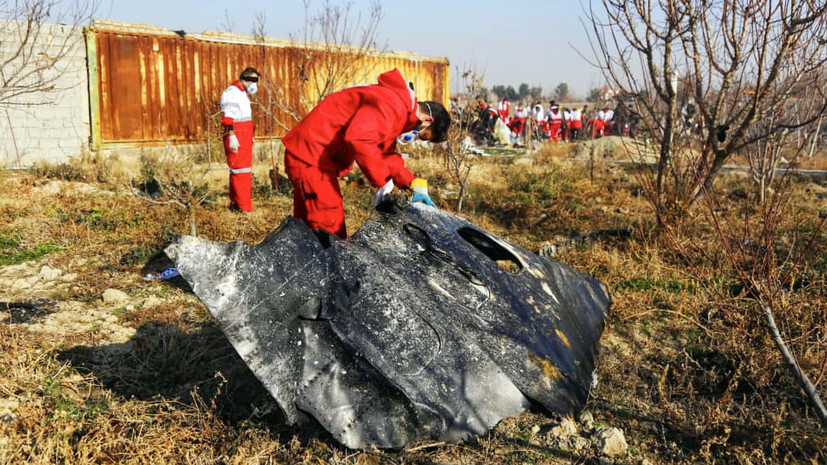Iran’s air defense system mistook the passenger liner of Ukraine’s International Airlines for a cruise missile, Brigadier General Amir Ali Hajizadeh, commander of the Military Space Forces of the Islamic Revolutionary Guards Corps (IRGC), said. His words are quoted by the Iranian agency ISNA.
“The plane was identified as a cruise missile,” Hajizadeh said during a press conference.
According to the commander, the operator lost contact with the command, he made the decision to launch on his own. He had a few seconds for this, said Hajizade, and "he made a bad choice."
Recall that on the morning of January 8, shortly after departure from an international airport in Tehran, the Boeing 737-800 of Ukraine International Airlines (UIA) crashed. There were 176 people aboard PS752, including nine crew members. They all died.
On the morning of January 11, Iranian authorities recognized that the plane was shot down by the forces of the Islamic Republic as a result of human error - the airliner flew near a military facility.
“An internal investigation of the armed forces found that, unfortunately, rockets fired due to human error led to a terrible disaster for the Ukrainian plane and the death of 176 innocent people,” wrote President of the Islamic Republic Hassan Rouhani on Twitter.
The head of state said that Iran deeply regrets the mistake. He instructed to take all necessary measures to pay compensation to the relatives of the victims of the crash.
In turn, Hadzhizade emphasized that the IRGC is fully responsible for the tragedy. He is ready to accept any decision of the country's authorities regarding the incident. The commander added that he “wanted to die” when he heard about the crash of the Ukrainian plane.
The general explained the delay in publishing information about the causes of the disaster by the IRGC’s desire to conduct an investigation, rather than trying to hide the information. According to him, he learned about the real causes of the tragedy on the day the plane crashed, but it was impossible to notify the leadership of the country's civil aviation about this.
“Civil aviation has not yet been notified that the cause was a rocket, so they did not have information about it. I found out about this on Wednesday morning. A group of the General Staff of the Armed Forces was formed to investigate the incident, and those who were informed about this were isolated, and we were forbidden to tell anything, ”RIA Novosti quoted him as saying.
In addition, the military leader said that the Iranian armed forces ordered the release of airspace during the attacks on the American base in Iraq. As Hajizadeh said, this requirement has not been met.
On the night of January 7-8, Iran launched a series of retaliatory missile strikes against the locations of American troops in neighboring Iraq. Thus, Tehran reacted to the operation of the US military, as a result of which the KISIR General Kassem Suleimani was killed.
There was no reason to cancel the flight
The Ukrainian side claims that there were no warnings from Tehran regarding the danger of flying. This was announced at a press conference by UIA President Evgeny Dykhne. He said that at the time of the departure of the Boeing 737-800 from Kiev Borispol Airport, the Iranian side did not make any statements about restricting air movements.
“At the time of (departure. - RT ) from Tehran’s airport, the airline also had absolutely no information and no decisions from the responsible administrations were communicated to us,” he said.
In addition, according to Dykhne, the crew kept in touch with the dispatcher of Tehran's airport. He noted that there was no deviation from the course.
To gallery page
“After take-off, they got in touch, and not like the Iranians said. They calmly reported the take-off and received permission. They acted strictly according to the information of the dispatcher, ”Dikhne TASS quotes.
He added that the Ukrainian board had a dialogue with the airport “until the last second of the incident.”
“Until the last second, there was an agreement on the route, the turn - this is all in the investigation materials,” said the head of UIA.
According to him, the routes for moving aircraft are determined by Tehran's airport, and the crash flight operated in accordance with the commands broadcast by the dispatcher.
However, the airline management notes that after the events in Iran, the carrier will continue to operate normally.

